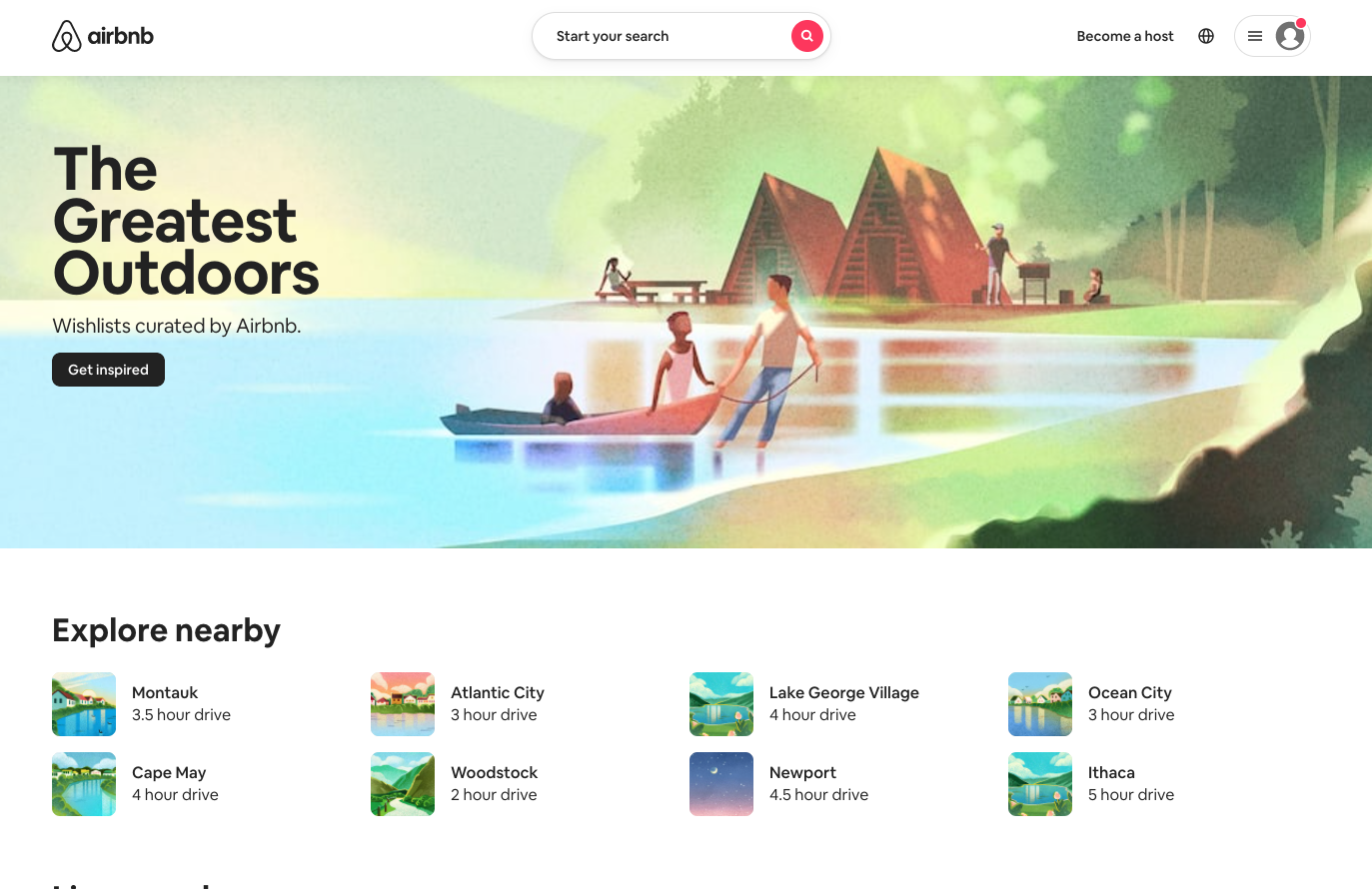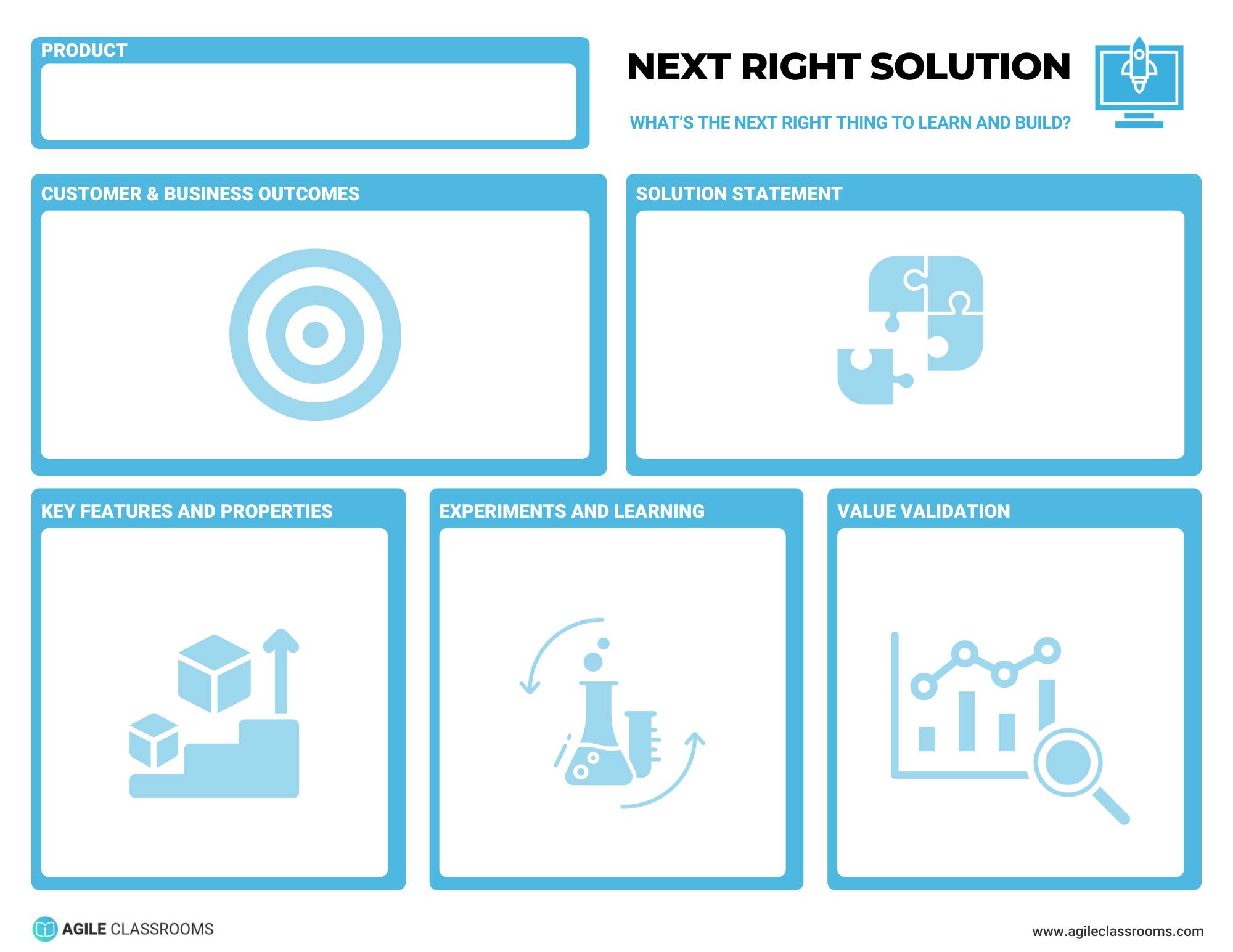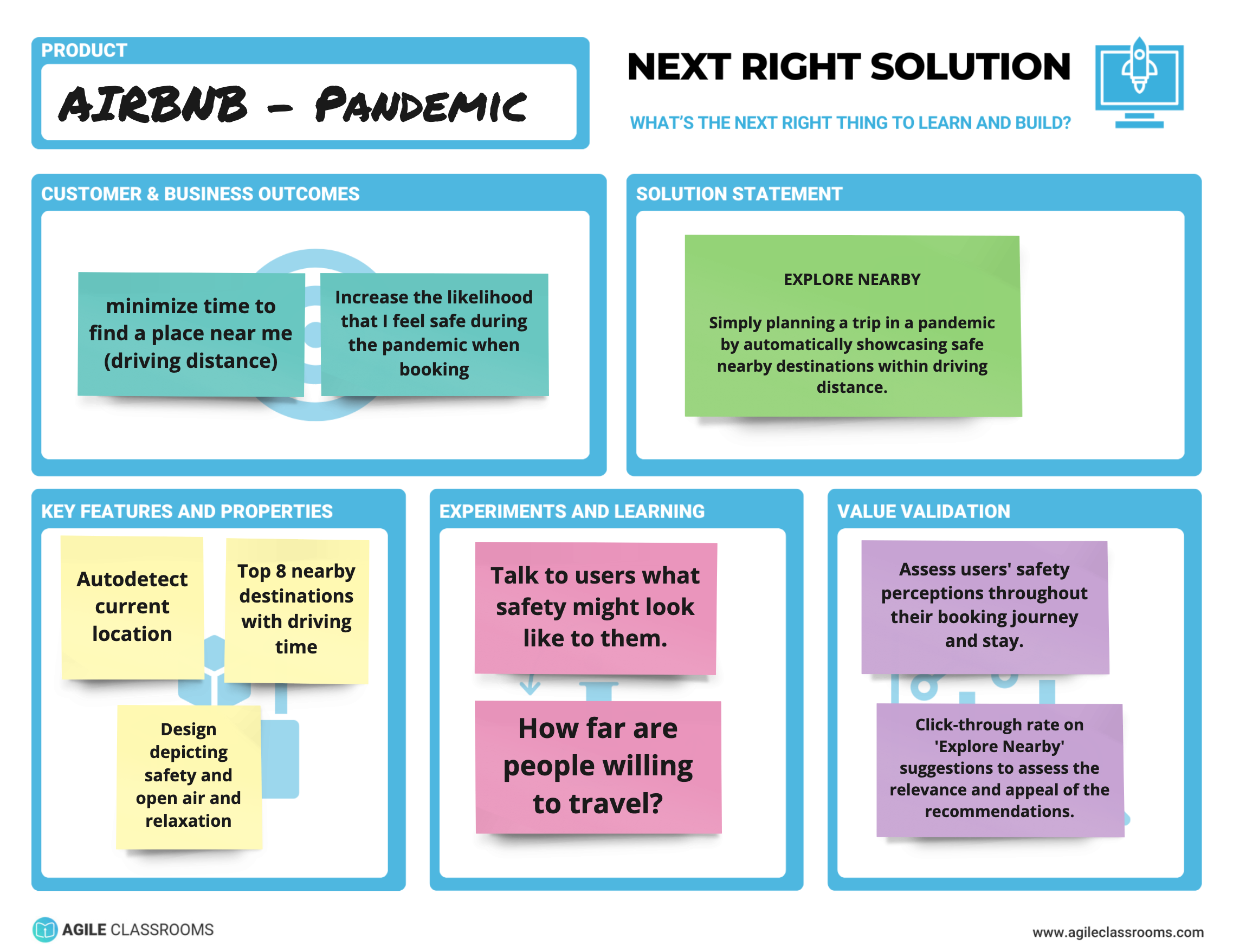Don't Miss an Article
Join thousands of other innovators receiving our newsletter.
The Next Right Solution
- John Miller
Small Steps to Navigate Uncertainty
Ever feel stuck between too many ideas and no clear next move?
In product development, uncertainty isn’t just common. It’s constant.
You won’t always have a perfect roadmap. You won’t always know what will work.
But you don’t need to.
As Frozen 2 wisely puts it:
“When you can’t see the future, all you can do is the next right thing.”
That’s not just a line from a movie. It’s how great teams actually move forward.
Trying to define the full solution upfront often leads to waste—building the wrong thing, too much of it, or solving problems no one cares about.
The better approach is to start smaller.
Focus on one meaningful outcome. Design a simple hypothesis. Learn fast. Adapt.
That’s the power of the Next Right Solution Canvas.
It gives you a simple, structured way to move through uncertainty with clarity and purpose without getting stuck in analysis or overwhelmed by complexity.
Here’s what the canvas looks like:
Let’s walk through how it works.
Start With Discovery: Customer Job Description and Desired Outcomes
Before filling out the canvas, you need clarity on what your customers are actually trying to get done. That’s where Job Maps and Outcome Statements come in.
You can start with the Next Right Solution Canvas on its own. It’s simple enough to dive in quickly.
But it works best when supported by strong discovery. That way, you’re not just moving—you’re moving in the right direction.
To do that:
Understand the Customer Job: Customer Job Description
Break that job into steps: Job Map
Define clear outcomes for each step: Job Maps and Outcome Statements
Prioritize opportunities: Stop Guessing, Start Winning
This helps you focus on the outcomes that matter most and avoid wasted work.
We will use a real example for this article: AirBnB during the pandemic. Here’s how Airbnb’s customer job might have looked during the pandemic:
Understanding the context, constraints, and customer motivations sets the foundation for meaningful outcomes.
Section 1: Customer and Business Outcomes
This is where everything starts.
Define the outcomes you want to improve, not the features you plan to build.
What does the customer want to accomplish? What does the business need to achieve?
If you skip this, you risk chasing ideas that sound good but don’t move the needle.
In the example below, we’re only showing customer outcomes. In practice, you should define both customer and business outcomes to guide your decisions.
You can view the full Airbnb example canvas at the end of this article.
Airbnb Example:
Customer Outcome: Minimize time to find nearby places
Customer Outcome: Ensure safety during booking
Business Outcome: Increase bookings by 10 percent during the pandemic
Section 2: Solution Approach
Treat this like a hypothesis.
What’s your best idea for how to help the customer achieve the outcome?
You’re not committing to a solution. You’re proposing a direction that might work and is worth exploring.
Airbnb Example:
Highlight safe, local travel options within a reasonable driving distance.
Section 3: Key Features
Think of these like epics in Agile product management.
These are the big rocks—the major building blocks that support your approach.
It’s not the full backlog. It’s the minimum set of features that could drive the outcome.
Airbnb Example:
Autodetect location, list nearby destinations, emphasize safety language and visuals in the interface.
Section 4: Experiments and Learning
Use this section to plan how you’ll learn.
What assumptions need to be tested? What research or experiments will help you validate or challenge your thinking?
This keeps your team in a learning mindset.
It also shows stakeholders that change is expected, based on what you discover—not a sign of failure.
Airbnb Example:
Explore whether users are willing to drive 8 to 10 hours for a trip. Plan interviews or analytics to learn the actual preferred travel distance for weekend getaways.
Section 5: Value Validation
This is like your acceptance criteria for outcomes.
While acceptance criteria confirm whether a feature functions, value validation looks at whether the outcome improved.
It’s not about delivery. It’s about impact.
Airbnb Example:
Track click-through rates on recommended getaways. Ask users if they feel safer during booking. Compare feedback and usage to previous baselines.
Section 6: Implementation
The canvas guides what you implement next.
It’s not just a planning tool. It shapes what gets built, tested, and delivered.
As you move into implementation, you’ll inevitably learn more.
Reality shows up in code, usage patterns, conversations, and constraints.
That learning may lead you to adjust what you're building—or revise the canvas entirely.
And once this outcome is addressed, it helps you decide what your next right solution should be.
Airbnb Example:
Their homepage evolved to spotlight nearby destinations, safety messaging, and drive-time filters aligned to user needs. Here is what their homepage looked liked as a a result.

What’s Next?
Once you’ve validated one outcome, ask:
What’s the next outcome that would make the biggest difference?
Use your outcome list and revisit the Jobs-to-Be-Done and opportunity analysis frameworks.
Then, rinse and repeat. Fill out a new canvas. Keep moving forward.
The goal isn’t perfection. It’s momentum built through small, smart steps.
Download the Canvas and Start Now
The Next Right Solution Canvas won’t think for you. But it will help you think more clearly and act more confidently.
Download it here: Next Right Solution Canvas
Use it to take your next step.
Not the perfect solution. Just the next right one.
What’s one outcome you can impact today?
That’s how momentum builds. We move through uncertainty, one step at a time.
Want to go deeper?
We use the Next Right Solution Canvas in our Certified Scrum Product Owner (CSPO) course to help product leaders:
Prioritize outcomes over features
Align stakeholders without conflict
Design experiments that drive learning and value
If you want hands-on practice applying this canvas to your own work, join an upcoming CSPO session.
You’ll leave with tools, templates, and clarity on what really matters in product leadership.
👉 Explore Certified Scrum Product Owner (CSPO) Courses
🏅 Earn 0.25 SEUs/PDUs for reading this! Renew your PMP, CSM, or CSPO certification.
Enjoyed this post? Let’s keep going.
Whether you're leading a team, managing a product, or transforming a classroom, I have resources to help you work smarter and get real results.
Click below for what works for you:
Free Resources
More Articles
Engaging Workshops
About John
Hey, I’m John. I help leaders, educators, and product innovators work smarter and build things that matter.
I cut through the noise to bring modern methods that actually work. Whether it’s leadership, product management, or education, the goal is the same—less friction, more impact. No fluff. No jargon. Just real-world insights to help you get better, faster.
💡 What You’ll Get Here:
✔ Smarter ways to lead and collaborate without the micromanaging
✔ Fresh, no-nonsense takes on modern work and education
✔ Tools and tactics to make work easier, faster, and more effective
Work doesn’t have to be chaotic.
Let's connect!


